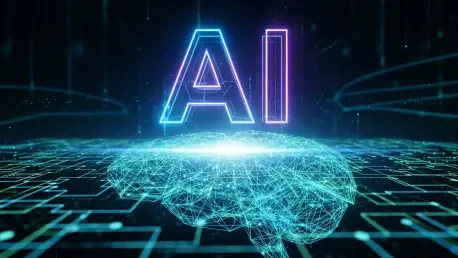Imagine a world where software systems autonomously adapt to user needs, predict issues before they arise, and make decisions without human intervention—yet the very intelligence driving these capabilities introduces unprecedented risks if not rigorously validated. AI agents, the backbone of such systems, are transforming industries with their ability to automate complex tasks and personalize interactions. However, ensuring their reliability and safety poses a monumental challenge for quality assurance (QA) professionals. This review delves into the cutting-edge domain of AI agent testing, exploring its methodologies, challenges, and transformative potential in modern software development.
Core Features of AI Agent Testing
AI agents stand out as autonomous programs powered by machine learning, natural language processing, and decision-making algorithms. Unlike traditional software with predictable outputs, these agents exhibit non-deterministic behavior, meaning identical inputs can produce varied results based on continuous learning and adaptation. Testing such systems requires dynamic validation approaches that go beyond static scripts, focusing on real-time performance and evolving responses in unpredictable scenarios.
A defining characteristic of AI agent testing lies in its emphasis on context awareness. These agents often operate within intricate, interconnected ecosystems, interacting with multiple systems and data sources. Evaluating their performance demands frameworks that account for dependencies and environmental variables, ensuring seamless operation across diverse conditions while maintaining accuracy and relevance in decision-making processes.
Another critical feature is the integration of ethical considerations into testing protocols. With AI agents influencing high-stakes areas like customer service and cybersecurity, ensuring fairness and transparency becomes paramount. Testing must address potential biases embedded in algorithms and assess how decisions align with societal values, adding a layer of complexity absent from conventional software validation.
Performance and Methodologies in Practice
The performance of AI agent testing hinges on specialized methodologies tailored to their adaptive nature. Techniques such as simulation-based testing, using digital twins to mimic real-world scenarios, allow testers to evaluate behavior under controlled yet realistic conditions. Additionally, adversarial testing probes robustness by exposing agents to malicious inputs, revealing vulnerabilities that could compromise security or functionality.
Continuous monitoring and regression testing play a vital role in maintaining reliability over time. As AI agents learn and evolve, there’s a risk of model drift—where performance degrades due to changing data patterns. Real-time tools track these shifts, while integration testing ensures cohesive operation across interconnected modules, providing a comprehensive assessment of scalability and endurance under stress.
Practical applications further highlight the effectiveness of these approaches. In software development, QA bots powered by AI agents streamline defect detection, while virtual assistants in customer service rely on rigorous testing to ensure accurate responses. Across industries, performance metrics focus not only on technical precision but also on user trust, demonstrating the multifaceted nature of validation in this domain.
Emerging Tools and Trends
Advancements in AI agent testing are reshaping the QA landscape with innovative tools and platforms. Cloud-based solutions like KaneAI leverage AI-native test agents to generate intelligent scenarios, analyze logs, and optimize cross-browser coverage with minimal scripting effort. Such platforms enhance scalability, enabling testers to handle complex validations efficiently across diverse environments.
A notable trend is the shift toward autonomous validation pipelines. These systems adapt test generation dynamically, responding to the agent’s learning patterns in real time. Coupled with enhanced monitoring capabilities, they reduce manual oversight while maintaining accuracy, marking a significant leap in testing efficiency and adaptability for large-scale deployments.
Ethical oversight is also gaining prominence as a core component of testing frameworks. With growing scrutiny on AI’s societal impact, validation now includes assessing explainability—ensuring decisions can be understood by humans. This trend underscores a broader movement toward aligning technical innovation with accountability, shaping how testing evolves in the coming years.
Challenges Impacting Effectiveness
Despite its potential, AI agent testing faces substantial hurdles that affect its implementation. Model drift remains a persistent issue, as agents’ performance can degrade over time without updated data or recalibration. This necessitates ongoing monitoring, adding to operational costs and complexity, particularly for organizations with limited resources or expertise.
Vulnerabilities to adversarial inputs pose another critical challenge. Malicious data can manipulate AI behavior, leading to erroneous outputs or security breaches. Developing robust defenses through testing requires sophisticated techniques and substantial investment, often outpacing the capabilities of smaller teams or less mature frameworks.
Ethical concerns, including bias and transparency, further complicate the landscape. Testing must identify and mitigate biases in decision-making processes, while the lack of standardized guidelines hinders consistency across industries. High setup costs and skill gaps among testers exacerbate these issues, highlighting the need for accessible training and unified protocols to ensure equitable progress.
Final Assessment and Next Steps
Reflecting on this evaluation, AI agent testing emerges as a groundbreaking yet challenging frontier in software QA. Its methodologies demonstrate remarkable potential to validate complex, adaptive systems, while tools like KaneAI showcase efficiency in scaling testing efforts. However, persistent issues such as model drift and ethical dilemmas underscore the gaps that need addressing.
Looking ahead, the path forward demands a concerted effort to develop standardized frameworks that can unify testing practices across sectors. Investing in accessible training programs to bridge skill gaps becomes essential, empowering a wider pool of professionals to tackle these challenges. Additionally, fostering collaboration between technologists and ethicists offers a promising avenue to embed fairness and transparency into validation processes.
Ultimately, the evolution of AI agent testing hinges on striking a balance between automation and human oversight. By prioritizing scalable tools and ethical guidelines, the industry can build trust in AI systems, ensuring they serve as reliable partners in innovation. This journey, though complex, paves the way for a future where intelligent agents seamlessly integrate into daily operations, validated with precision and purpose.









